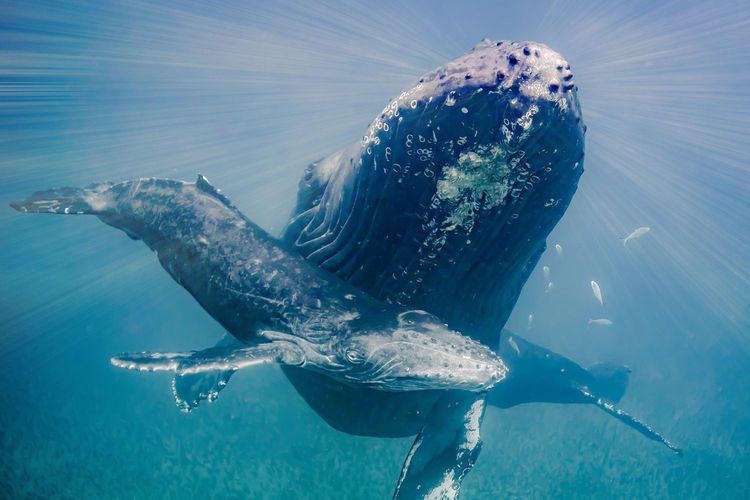
The coloration of animals in the ocean follows a surprisingly regular pattern by depth, most likely tied to how light penetrates ocean water and an animal’s ability to blend in with its surroundings. Unlike animals on land or in shallow water – where skin, fur, and feather coloration may differ within habitats– deep-sea animals follow a surprisingly regular pattern in their coloration.
Since the wavelength of blue light penetrates the water better, the animals that live on the surface are typically blue, while deeper, the animals are blue above and white below. In deep water the animals tend to be red or black all over the body as the red light is rapidly filtered by the water making them essentially invisible.. Finally, at the bottom of the sea, almost all animals are either a pale red or a cream color that resembles the seafloor. The most likely explanation for this distribution is camouflage, color that blends in with the surroundings, a tactic used to avoid predation. For an animal to be invisible, its color and brightness have to match that of the background but it also depends on the light hitting it.


